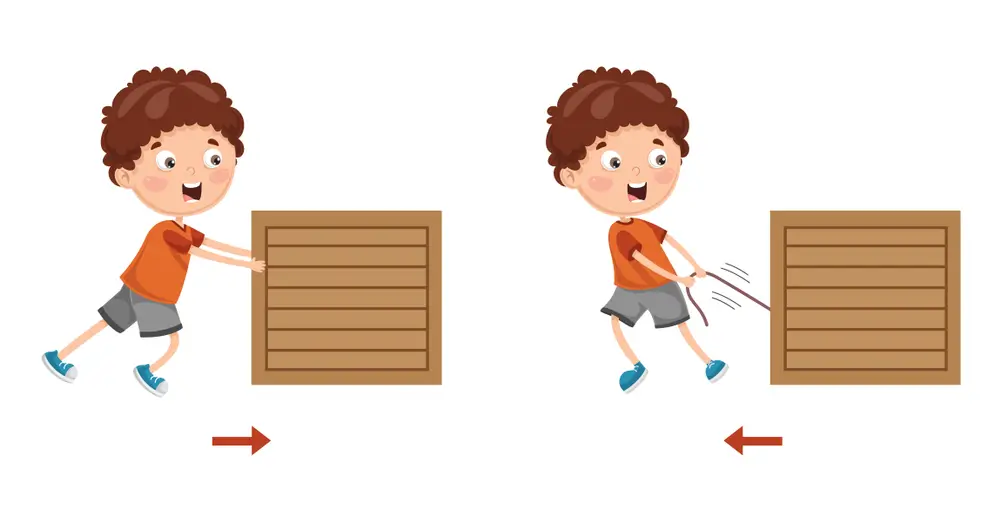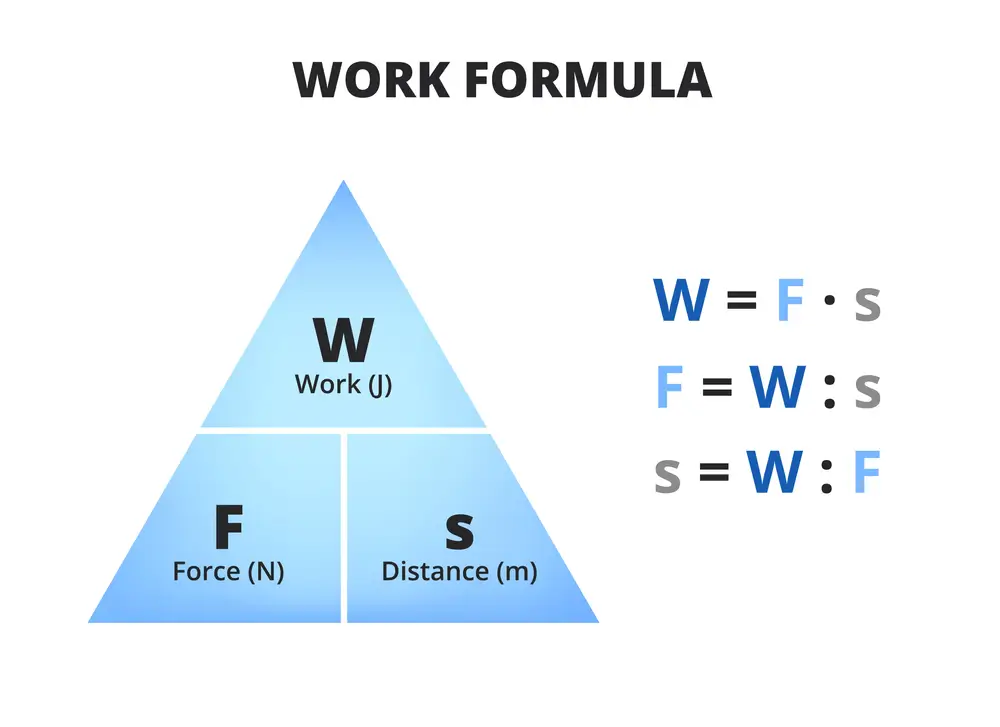Physics has two ideas, work, and power, which have substantial and helpful applications to our daily lives. Two words that are covered in physics are work and power. However, it is not appropriate to interchange these terms.
The difference between work and power is that the quantity of energy required to move an object from one location to another is referred to as work. Consider moving a dining room table or chair from your living room. On the other hand, power refers to how quickly energy is used up.
Let’s first understand the definition of work and power:
Table of Contents
What is Power?

It is the speed at which energy moves from one place to another in a unit of time. It rises if the work is completed more quickly or the energy transfer takes place more quickly.
The concept of power is essential when expressing the operating capability of a water heater, electric oven, light bulb, fan, or generator.
Power (P) = W/t in mathematics, where P Equals power (in watts)
• W stands for work or energy output.
• t = time (in seconds)
It is more common when the system has both a strong force and a rapid velocity.
Average of Power
Average power is calculated by dividing the total energy used by the required time. The average quantity of work completed or energy converted per unit of time is known as average power.
Power Formula

The rate at which work is performed on an object is referred to as its power. Power is a time concept. It has to do with how quickly a task gets completed. The power equation is described below.
Power = Time / Work
P = W / t
Unit for Power
The standard metric unit for power is a Joule / second, sometimes known as a Watt and written W. The unit for standard metric power is the Joule, while the standard metric unit for time is the second.
Learn more: What is the Difference Between Melodramatic and Dramatic?
What is Work?

Transfer of energy is a definition of work. When energy is transferred to an item, it is said to have undergone work in physics. If one thing offers another energy, that first object is doing work on the second object.
A force applied across a distance is referred to as work. A nice illustration of work would be picking up a heavy object and placing it on a shelf.
When force and distance are multiplied, the result is called work. This scalar value is created by multiplying the force, the distance, and the sine of the angle formed by the two vectors.
W= Fxd, where the force is equal to the object’s weight and the distance is equal to the shelf’s height.
Work Equation
The following equation can be used to represent work mathematically.
W = F • d • cos, where F is the force, d is the displacement, and the angle (theta) is the angle between the force and the vector of displacement.

Work SI Unit
Work SI unit is Joule (J). It is described as the work done over a one-meter distance by a force of one newton.
Types of Work
There are three types of work:
- Positive Work
- Negative Work
- Zero Work
1. Positive Work
Positive work is done when a force moves an object in that direction. When you push a block, and it goes in the same direction as the push, that is an example of this type of work. The work is positive.
2. Negative Work
The work is considered to be negative if the force and the displacement are moving in opposing directions.
Example: Your quickly moving car moves in the exact opposite direction of the force when you apply the brakes.
Work is negative because (in this case) the force is attempting to halt the vehicle, and its direction is the opposite of the displacement.
3. Zero Work
The work done by the force on the item is zero if the directions of the force and the displacement are perpendicular to one another.
For instance, if we push hard against a wall, the force we apply to the wall produces nothing because in this scenario, the wall’s displacement is equal to zero. However, because our muscles are expending internal energy during this process, we become tired.
Difference Between Work and Power
There are many differences between work and power given below:
The main difference between work and power is that power is the rate at which work is completed, whereas work is the quantity of energy transmitted when an external force moves an item.
Another difference between work and power is that the SI unit of work is the Joule (J), whereas the SI unit of power is the watt (W).
W = F.S is a formula that represents work, while P = W/t is a formula that represents power. The SI unit of power is the watt, whereas the unit of work is the Joule (J) (W).
The additional units of power are kW, MW, GW, and horsepower (hp). The additional units of work are kWh, MW, GW, and electron volt (eV).
Power is defined by factors like work done and time, whereas work is determined by things like force and displacement.
In comparison between work vs. power, power is a notion that is more commonly utilized in daily life than work.
Work Vs. Power
In comparison between work vs. power, power is the rate of energy use or creation, whereas work is the energy used to apply a force across a distance in the direction of the force.
Energy is created in an internal combustion engine by the burning of fuel; the force created by the pressure pushing over the piston creates work; the rate at which this work is completed determines the engine’s power.
Power is a time-based quantity, just like other rate quantities are. How quickly a task is completed is connected to power.
One job or task can be completed slowly while the other is completed quickly. Since they are both identical occupations, the work is the same in each instance, but the power is different. The power equation demonstrates the significance of time:
Power = Time / Work
P = W / t
What is the Difference Between Work and Power?
Highlighting the main differences between work and power in the following table:
| Work | Power |
|---|---|
| Work is the amount of energy transferred when an outside force pushes an object. | Power is the amount of energy spent or the rate of work being done per unit of time. |
| Work is a scalar quantity. | Power is also a scalar quantity. |
| Joule is the unit of measure for work (J). | Watt is used to measure power (W). |
| Work is calculated using the formula Work = Force x Displacement. | Power is calculated using the formula Power = Work/Time. |
Conclusion
Based on the quantity and rate of energy consumption, work and power differ from one another. Power and work are comparable in that they both require energy.
The difference between work and power is that work is defined as the force or energy required to move an object. On the other hand, the quantity of energy that is transferred or transformed in a unit of time is known as power. The SI unit of power, the watt, is equal to one Joule per second.
Read more: What is the Difference Between Autotrophs and Heterotrophs?


